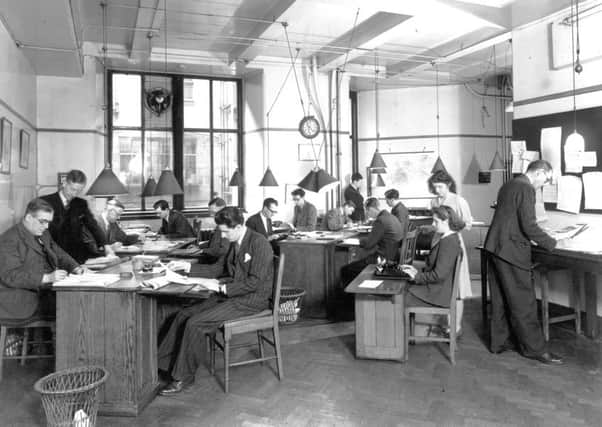Impartiality, firmness and independence - Ian Stewart on his new book about the history of The Scotsman


I think it is impossible to work for The Scotsman and not be aware that it is a newspaper with a long and prestigious history. That history is not taught in the newsroom – newspapers tend to be busy places and the formal passing of knowledge of our own past takes a low priority among journalists – but the hand of history is continually present.
Having worked there for around 25 years, and getting to the position of editor, I thought I knew the history. It turns out I had only the scantest knowledge, and what I discovered in writing a book to mark the paper’s 200th anniversary, I found fascinating.
Advertisement
Hide AdOf course, the celebration of The Scotsman’s bicentenary has taken many forms which have reinforced the paper’s place in the fabric of Scottish life. There has been a television documentary and many supplements focusing on particular parts of the paper’s heritage – even Edinburgh’s famous floral clock has marked the occasion. As a part of all this I was asked to write Telling Scotland’s Story, which was to look back at how the paper had reported major events, going through the archive and reproducing the reports of the day.
For me that process held two major surprises: just how much of the detail of the paper’s history I did not know, and how the values and principles of the paper have not changed since its inception and are still enshrined in the working practices of today.
Telling Scotland’s Story is not a history of The Scotsman. There have been a few of those written already, but it would be wrong, I thought, not to recount the circumstances in which the paper first saw the light of day. That tale is familiar: like-thinking individuals William Ritchie and Charles Maclaren started the paper in 1817 after existing newspapers refused to publish a story Ritchie had written exposing establishment failings. This account of its birth is largely agreed. But as a journalist I was intrigued: what was the story that started it all?
It was a journalistic endeavour that would be absolutely recognisable in modern newsrooms today. Ritchie had heard that patients at the Royal Infirmary in Edinburgh were not getting sufficient food and that there were poor standards of hygiene. He also believed that the managers and directors of the hospital were protected from scrutiny or criticism because of their establishment privileges. So he and his associate set out to change that and ran what media organisations still run today, a campaign – that is, a series of stories all focused on bringing unwanted attention and therefore forcing change. This early example of the power of the press was successful, and they managed to force an official inquiry into the running of the hospital.
There is another part of The Scotsman’s early history that is well known – that Maclaren fought a duel with the editor of a rival publication. What I did not know was that an account of that duel (they both missed and left the field with honour and bodies intact) was published in the paper – it is republished in the book. It contains the fact that Maclaren’s Scotsman partner William Ritchie went to the field in Ravelston where the duel was taking place and was asked to leave by the seconds. It does not say if he was there to try to stop it or to support his friend.
But this is just the opening chapter of the book, which then goes on to tell the stories of courage, discovery, innovation and tragedy that shaped Scotland and the world, including the two world wars. As a former editor I was particularly interested in The Scotsman’s decision to break the government of the day’s ban on reporting a naval tragedy during the Second World War. That move involved some of the universal issues that editors have to deal with, where the authorities believe that the reporting of the facts is against the greater good.
Advertisement
Hide AdThe event was the sinking of the RMS Lancastria in June 1940, a liner that had been repurposed as a troop ship. While evacuating troops from France it was hit by German bombers, and it sank with an estimated 4,000 lives lost. Winston Churchill, fearful of the effect on the nation’s morale, issued a Defence Notice banning publication of any reports. However, The Scotsman took the decision to report the tragedy after an American paper did so. The Scotsman also carried a leader explaining why it had done so, which is re-published in the book.
Telling Scotland’s Story doesn’t just concentrate on the distant past, it comes right up to date with the paper’s coverage of the 2014 independence referendum and beyond. I only hope that others find these first drafts of history as enlightening and engaging as I have.
Telling Scotland’s Story by Ian Stewart, Great Northern Books, £19.99. To buy a copy call 0131-311 7253 between 9am and 5pm, Monday to Friday, or visit 200-gifts.scotsman.com